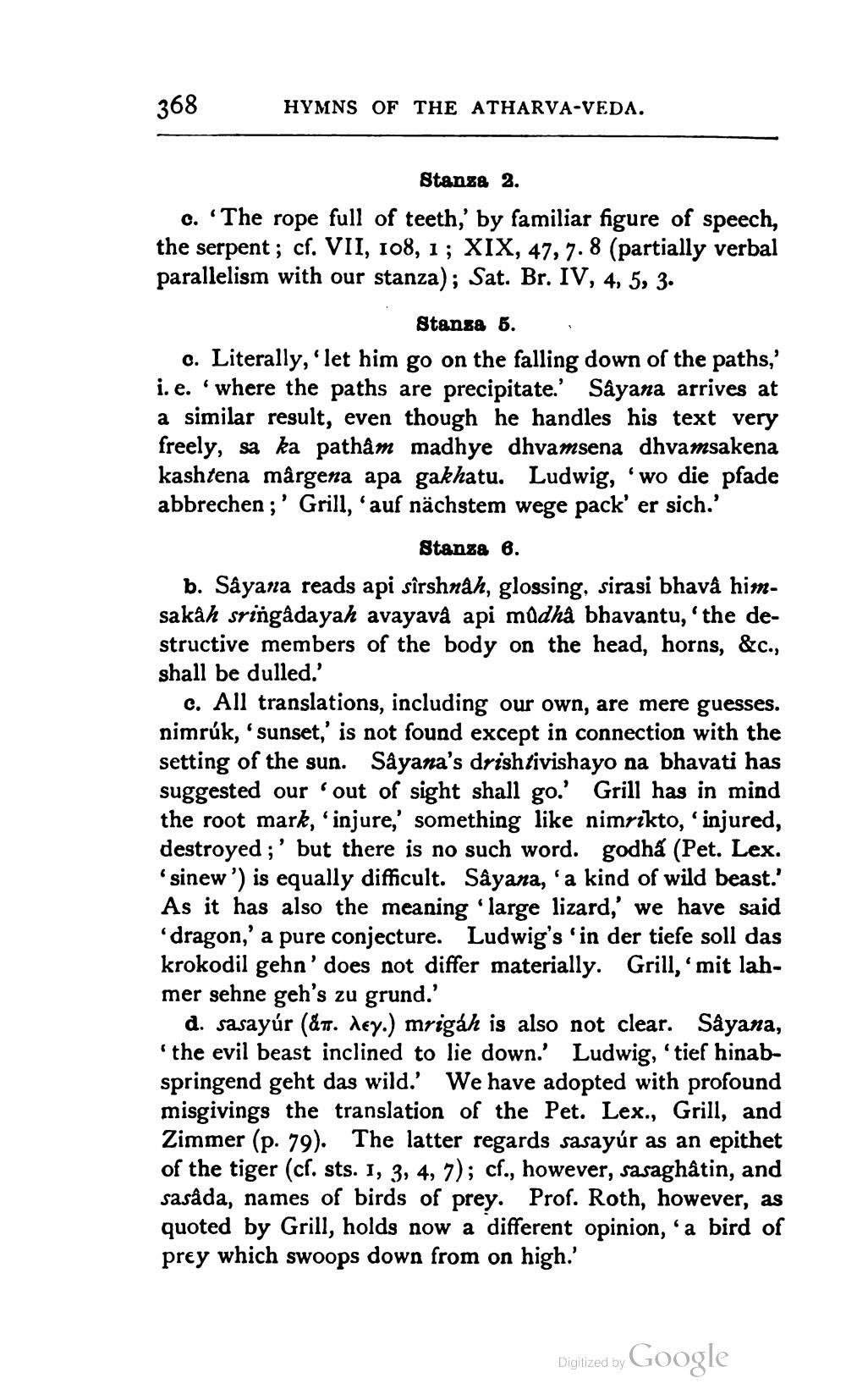________________
368
HYMNS OF THE ATHARVA-VEDA.
Stanza 2. c. 'The rope full of teeth,' by familiar figure of speech, the serpent; cf. VII, 108, 1; XIX, 47, 7.8 (partially verbal parallelism with our stanza); Sat. Br. IV, 4, 5, 3.
Stansa 6. c. Literally, 'let him go on the falling down of the paths,' i.e. 'where the paths are precipitate.' Sayana arrives at a similar result, even though he handles his text very freely, sa ka pathâm madhye dhvamsena dhvamsakena kashtena margena apa gakhatu. Ludwig, wo die pfade abbrechen;' Grill, auf nächstem wege pack' er sich.'
Stanza 6. b. Sâyana reads api sîrshnah, glossing, sirasi bhava himsakah sringâdayah avayava api madhá bhavantu,'the destructive members of the body on the head, horns, &c., shall be dulled.'
c. All translations, including our own, are mere guesses. nimrúk, sunset,' is not found except in connection with the setting of the sun. Sayana's drishtivishayo na bhavati has suggested our 'out of sight shall go.' Grill has in mind the root mark, 'injure,' something like nimrikto, 'injured, destroyed ;' but there is no such word. godhá (Pet. Lex.
sinew ') is equally difficult. Sayana, 'a kind of wild beast.' As it has also the meaning large lizard,' we have said 'dragon,' a pure conjecture. Ludwig's 'in der tiefe soll das krokodil gehn' does not differ materially. Grill,‘mit lahmer sehne geh's zu grund.'
d. sasayúr (&t. dey.) mrigáh is also not clear. Såyana, the evil beast inclined to lie down. Ludwig, 'tief hinabspringend geht das wild. We have adopted with profound misgivings the translation of the Pet. Lex., Grill, and Zimmer (p. 79). The latter regards sasayúr as an epithet of the tiger (cf. sts. I, 3, 4, 7); cf., however, sasaghâtin, and sasáda, names of birds of prey. Prof. Roth, however, as quoted by Grill, holds now a different opinion, a bird of prey which swoops down from on high.'
Digitized by
Digjized by Google




